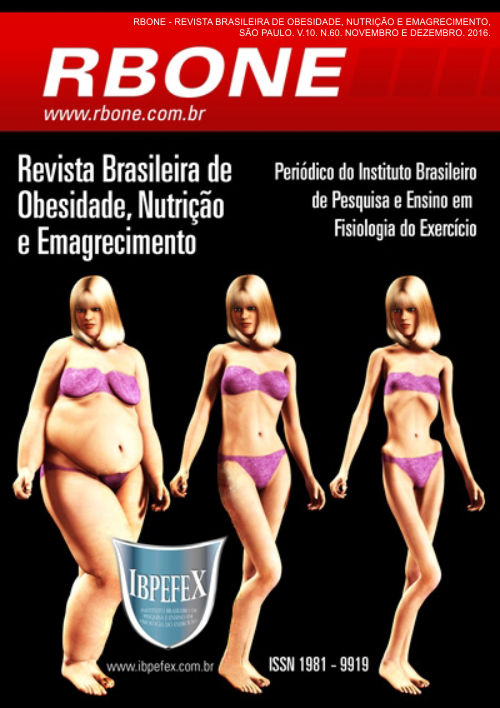Analizar los efectos del tratamiento del hipotiroidismo y el hipotiroidismo subclínico sobre la masa corporal
Resumen
El hipotiroidismo y el hipotiroidismo subclínico (SCH) son trastornos endocrinos comunes que afectan principalmente a las mujeres. Las prevalencias de hipotiroidismo clínico y subclínico se estiman en 2% y 3-15%, respectivamente. Ambos evolucionan con síntomas muy similares, siendo el aumento de peso una de las presentaciones más frecuentes. El objetivo de la terapia de reemplazo hormonal con hormona tiroidea es alcanzar un estado de eutiroidismo, clínica y bioquímicamente, que se evalúa mediante la medición periódica de la hormona estimulante de la tiroides (TSH), la cual debe estar dentro del rango normal de referencia. Aunque los pacientes tienden a correlacionar el sobrepeso o incluso la obesidad con el hipotiroidismo clínico o subclínico, según la evidencia disponible, no se puede establecer con certeza el aumento de peso atribuible a estas condiciones. También es incierta la asociación entre el inicio del aumento de peso y el inicio de la disfunción endocrina, por lo tanto, no es posible asegurar la pérdida de peso con la terapia hormonal. Tales dudas hacen que este tema sea controvertido y controvertido. El objetivo de esta revisión es evaluar la relación entre los niveles de TSH y el peso, y los efectos del tratamiento del hipotiroidismo clínico y subclínico sobre la masa corporal, centrándose específicamente en la pérdida de peso.
Citas
-Biondi, B. Thyroid and Obesity: An Intriguing Relationship. The Journal of Clinical Endocrinology & Metabolism. Vol. 95. Núm. 8. p. 3614-3617. 2010. Available at: <http://press.endocrine.org/doi/full/10.1210/jc.2010-1245> (Accessed 23/01/2016)
-Chakera, A.J.; Pearce, H.S.; Vaidya, B. Treatment for primary hypothyroidism: current approaches and future possibilities.Drug Des Devel Ther. Vol. 6. p. 1-11. 2012. Available at: <http://www.ncbi.nlm.nih.gov/pmc/articles/PMC3267517/> (Accessed 21/01/2016)
-Dale, J.; Daykin, J.; Holder, R.; Sheppard, M.C.; Franklyn, J.A. Weight gain following treatment of hyperthyroidism. Clin Endocrinology (Oxf). Vol. 55. Núm. 2. p. 233-239. 2001. Available at: <http://www.ncbi.nlm.nih.gov/pubmed/11531931> (Accessed 30/01/2016)
-Enrique, S. J. The thermogenic effect of thyroid hormone and its clinical implications.Annals of Internal Medicine. Vol. 139. Num. 3. p. 205-213. 2003. Available at: <http://www.the-aps.org/mm/publications/journals/pim/silva-pdf.pdf> (Accessed 30/01/2016)
-Esmail, R. A.; Hinrichs, R. E.; Kabadi, U. M. Primary hypothyroidism: Presence of central adiposity and its improvement on attaining euthyroid state with L-thyroxine. Oxford Journal of Endocrine and Metabolic Diseases. Vol. 3. Núm. 5. p. 241-244. 2013. Available at: <http://file.scirp.org/Html/1-1980100_36438.htm> (Accessed 21/01/2016)
-Fox, C.S.; Pencina, M.J.; D’Agostino, R.B.; and collaborators. Relations of thyroid function to body weight: cross-sectional and longitudinal observations in a community-based sample.Archives of Internal Medicine. Vol. 168. Núm. 6. p.587-592. 2008. Available at: <http://archinte.jamanetwork.com/article.aspx?articleid=414105>(Accessed 16/01/6).
-Hoogwerf, B. J.; Nuttall, F. Q. Long term weight regulation in treated hyperthyroid and hypothyroid subjects. The American Journal of Medicine. Vol. 76. Núm. 6. p. 963-970. 1984. Available at: <http://www.amjmed.com/article/0002-9343(84)90842-8/abstract> (Accessed 21/01/2016)
-Jonklaas, J.; Bianco, A. C.; Bauer, A. J.; and collaborators. Guidelines for the treatment of hypothyroidism: prepared by the American Thyroid Association Task Force on Thyroid Hormone Replacement. Thyroid. Vol. 24. Núm. 12. p.1670-1751. 2014. Available at <http://online.liebertpub.com/doi/full/10.1089/thy.2014.0028>(Accessed 31/01/16).
-Knudsen, N.; Laurberg, P.; Rasmussen, L.B.; and collaborators. Small differences in thyroid function may be important for body mass index and the occurrence of obesity in the population.The Journal of Clinical Endocrinology & Metabolism. Vol. 90. Núm. 7. p. 4019-4024. 2005. Available at <http://press.endocrine.org/doi/abs/10.1210/jc.2004-2225> (Accessed 16/01/16).
-Kostoglou-Athanassiou, I.; Ntalles, K. Hypothyrodism -new aspects of an old disease. Hippokratia. Vol. 14. Núm. 2. p. 82-87. 2010. Available at: <http://www.ncbi.nlm.nih.gov/pmc/articles/PMC2895281/> (Accessed 21/01/2016)
-Krotkiewski, M. Thyroid hormones in the pathogenesis and treatment of obesity. European journal of pharmacology. Vol. 440. Núm. 2. p. 85-98. 2002. Available at: <http://www.sciencedirect.com/science/article/pii/S0014299902014206>(Accessed 16/01/2016).
-Lee, S.; Braverman, L.; Pearce, E. Changes in body weight after treatment of primary hypothyroidism with levothyroxine. Endocr Pract. Vol. 20. Núm. 11. p. 1122-1128. 2014. Available at: <http://www.ncbi.nlm.nih.gov/pubmed/24936556> (Accessed 21/01/2016)
-Longhi, S.; Radetti, G. Thyroid function and Obesity. J Clin Res Pediatr Endocrinol. Vol. 5. Núm. 1. p. 40-44. 2013. Available at: <http://www.ncbi.nlm.nih.gov/pmc/articles/PMC3608008/> (Accessed 15/01/2015)
-Nyrnes, A.; Jorde, R.; Sundsfjord, J. Serum TSH is positively associated with BMI. International journal of obesity. Vol. 30. Núm. 1. p. 100-105. 2006. Available at:<http://www.nature.com/ijo/journal/v30/n1/abs/0803112a.html> (Accessed 16/012016).
-Pearce, S. H.; Brabant, G.; Duntas, L. H.; and collaborators. 2013 ETA Guideline: managementof subclinical hypothyroidism. European thyroid journal. Vol. 2. Núm. 4. p. 215-228. 2013. Available at: <http://www.karger.com/Article/FullText/356507> (Accessed 16/01/2016).
-Roef, G.; Lapauw, B.; Goemaere, S.; and collaborators. ClinicalStudy: Body composition and metabolic parameters are associated with variation in thyroid hormone levels among euthyroid young men. European Journal of Endocrinology. Vol. 167. p. 719-726. 2012. Available at: <http://www.eje-online.org/content/167/5/719.full.pdf> (Accessed 3/02/2016)
-Santini, F.; Pinchera, A.; Marsili, A.; and collaborators. Lean Body Mass Is a Major Determinant of Levothyroxine Dosage in the Treatment of Thyroid Disease. JCEM. Vol. 90. Núm. 1. 2004. Available at: <http://press.endocrine.org/doi/10.1210/jc.2004-1306?url_ver=Z39.88-2003&rfr_id=ori:rid:crossref.org&rfr_dat=cr_pub%3dpubmed#sthash.lLdLZIR5.dpuf> (Accessed 30/01/2016)
-Sawka, A. M.; Jonklaas, J. Hypothyroidism. Canadian Medical Association Journal. Vol. 187. Núm. 3. p. 205. 2015. Available at: <http://search.proquest.com/docview/1659737701?accountid=15324> (Accessed 31/01/16)
-Skugor, M. Hypothyroidism and Hyperthyroidism. Cleveland Clinic. 2014. Available at: <http://www.clevelandclinicmeded.com/medicalpubs/diseasemanagement/endocrinology/hypothyroidism-and-hyperthyroidism/> (Accessed 30/01/2016)
Los autores que publican en esta revista aceptan los siguientes términos:
Los autores conservan los derechos de autor y otorgan a la revista el derecho de primera publicación, con el trabajo licenciado simultáneamente bajo una licencia de atribución Creative Commons BY-NC que permite compartir el trabajo con reconocimiento de la autoría del trabajo y publicación inicial en esta revista.
Los autores están autorizados a asumir contratos adicionales por separado, para distribución no exclusiva de la versión del trabajo publicado en esta revista (por ejemplo, para publicar en un repositorio institucional o como capítulo de libro), con reconocimiento de autoría y publicación inicial en esta revista. .
Se permite y anima a los autores a publicar y distribuir su trabajo en línea (por ejemplo, en repositorios institucionales o en su página personal) en cualquier momento antes o durante el proceso editorial, ya que esto puede generar cambios productivos, así como aumentar el impacto y la citación de lo publicado. trabajo (ver El efecto del acceso abierto).






